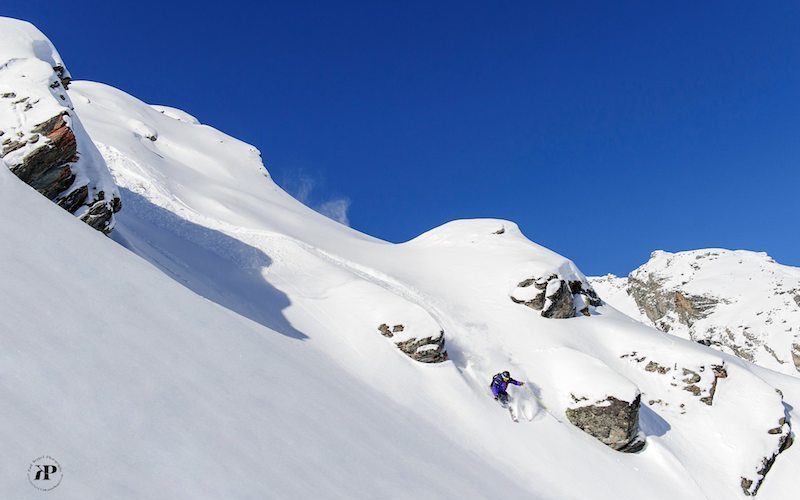Learning to ski off-piste can seem quite daunting; however there has probably never been an easier time to learn to ski off-piste. The latest fat skis, comfy boots, easy-to-use avalanche equipment, and experienced and skilled off-piste coaches means that your first off-piste adventure should be a very enjoyable experience.
“The best time to learn to ski powder is on a piste directly after a fresh snowfall.” Choose a coach who will take you to some gentle beginner off-piste terrain and this expert advice, combined with the latest skis, should help to make your first time skiing powder fun and memorable.
Below are a few tips to help you prepare for your first adventure off-piste and to help build your confidence.
Learn how to use your equipment – safety first!
If it’s your first time off-piste you should expect to be taken by your instructor on some nice gentle slopes and perhaps just the sides of the pistes. These areas are relatively safe and not prone to avalanches; however, it’s still very important to understand how to use your equipment. In case of an emergency you will need to know the number of whom to call for help, and also how to search in the snow and locate any people caught in the avalanche.
Tip – make sure your insurance covers skiing off-piste as well as helicopter rescue.
Fresh tracks in the snow
Unlike on the groomed runs where we have a solid piste to work against, the off-piste snow under your skis will be soft and moving. To start your turn in fresh snow try extending your legs, as this will put some force on the skis and, combined with some active leg steering, will help the skis to turn.
Start by linking some turns together on a gentle slope and when confident try to increase the tempo and make some shorter turns. The lines you create in the snow should look like a series of linked semi-circles or ‘C’ turns in the snow.
Tip: Try to avoid long traverses or dead spots between the turns.
Posture and body position
It is a common misconception that in powder you sit back to get your skis out of the snow.
There are times when we may need to sit back (such as when we’re straight running along a flat in heavy powder), but in general don’t do it; it’s much better to have a centered position, on top of your skis and in control.
If you do sit back it puts you in a tiring position, and from here it is difficult to control and turn the skis.
Tip – Narrow your stance width a little compared to skiing on the piste.
Timing and the pole plant
It’s very important to make a strong and enthusiastic pole plant. The pole plant helps you to maintain the rhythm of the turns down the whole descent and leads to a more flowing performance.
Remember to keep your hands away from the body and out in front. When planting the pole (as when on the piste) there should be no elaborate arm movements that are likely to throw you off balance. The action of the pole plant should come from the wrist and not the whole arm.
Tip – Practise your pole plant on the groomed run to build consistency, and try using a pole with a powder basket.
The Altitude winter company portfolio includes the ski and snowboard school, the Futures instructor training programmes, and FREERIDE VERBIER: a new school dedicated to off-piste coaching in Verbier.
For more information please contact us on: 0041 27 771 6006; [email protected],
altitude-verbier.com – altitude-futures.com – freeride-verbier.com
To follow the Altitude Verbier team:
https://www.facebook.com/altitudeverbier/
https://www.instagram.com/altitudeverbier/
https://twitter.com/AltitudeVerbier

